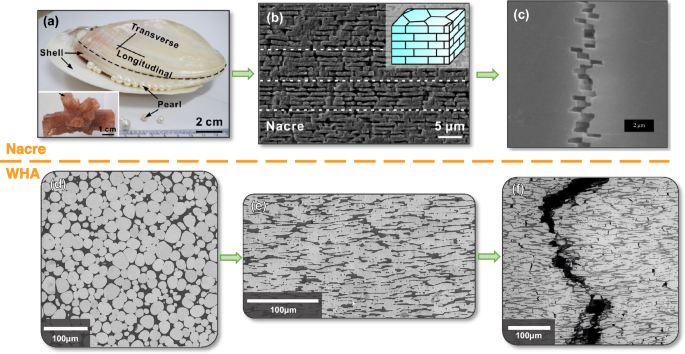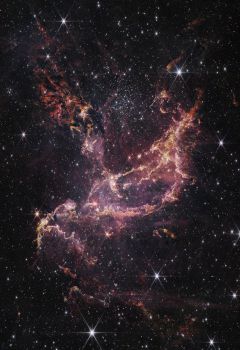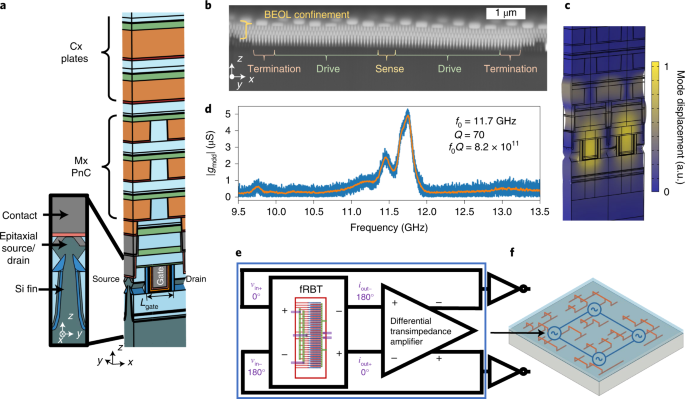タングステン重合金の強さの源泉が研究で明らかに Research reveals the source of strength in tungsten heavy alloys
2023-01-24 パシフィック・ノースウェスト国立研究所(PNNL)
◆パシフィック・ノースウェスト国立研究所(PNNL)とバージニア工科大学(Virginia Polytechnic Institute and State University)の科学者たちは、材料研究を通じてこの目標の実現に貢献しています。Scientific Reportsに掲載された彼らの最近の研究は、タングステン重合金のケースを作り、貝殻の構造を模倣することによって、先進的な核融合炉に使用できるように改善できることを示すものです。
◆核融合エネルギーを動力源として利用するためには、核融合反応に伴う高温・高照度環境に耐える高度な核融合炉を作る必要がある。タングステンは地球上のあらゆる元素の中で最も融点の高い元素の一つです。そのため、核融合炉の材料としては特に魅力的です。しかし、その反面、非常にもろいという欠点もあります。そこで、タングステンにニッケルや鉄などの金属を少量混ぜると、高い融点を保ちながら、タングステン単体より強靭な合金が生まれます。
◆これらのタングステン重合金に特性を与えるのは組成だけでなく、材料の熱機械的処理によって引張強度や破壊靭性などの特性が変化する可能性があります。特定の熱間圧延技術は、貝殻の真珠層としても知られる真珠層の構造を模倣するタングステン重合金の微細構造を生成しました。真珠層は、その美しい虹色に加えて、並外れた強さを示すことが知られています。PNNLとバージニア工科大学の研究チームは、潜在的な核融合用途のためにこれらの真珠層を模倣したタングステン重合金を調査しました。
◆合金の微細構造をより詳細に調べるため、Haag教授の研究チームは、走査型透過電子顕微鏡などの高度な材料特性評価技術を駆使して原子構造を観察した。さらに、エネルギー分散型X線分光法とアトムプローブ・トモグラフィーを組み合わせて、材料界面のナノスケール組成をマッピングした。
◆真珠層のような構造の中で、タングステン重合金は2つの異なる相からなる:ほぼ純粋なタングステンの「硬い」相と、ニッケル、鉄、およびタングステンの混合物を含む「延性」相。研究結果は、タングステン重合金の高強度は、密接に結合した「硬質」相と「延性」相を含む異種相間の優れた結合に由来することを示唆しています。この研究は、結晶構造、形状、化学が、タングステン重合金の強固な材料界面にどのように寄与しているかを示しています。また、核融合炉の材料設計や特性を向上させるためのメカニズムも明らかにしました。
◆この研究で示された知見は、PNNL内や科学研究コミュニティにおいて、すでに多くの次元でさらに拡張されている。PNNLでは、構造、化学、異種材料界面の強度を最適化するためのマルチスケール材料モデリング研究が進行中であり、核融合炉の極限温度と照射条件の下でこれらの材料がどのように振る舞うかを観察する実験的調査も行われています。
<関連情報>
- https://www.pnnl.gov/news-media/metal-alloys-support-nuclear-fusion-energy
- https://www.nature.com/articles/s41598-022-26574-4
核融合炉用真珠層模擬タングステン重合金の界面強度に関する研究 Investigation of interfacial strength in nacre-mimicking tungsten heavy alloys for nuclear fusion applications
J. V. Haag IV,J. Wang,K. Kruska,M. J. Olszta,C. H. Henager Jr.,D. J. Edwards,W. Setyawan & M. Murayama
Scientific Reports Published:11 January 2023
DOI:https://doi.org/10.1038/s41598-022-26574-4

Abstract
Tungsten heavy alloys have been proposed as plasma facing material components in nuclear fusion reactors and require experimental investigation in their confirmation. For this purpose, a 90W–7Ni–3Fe alloy has been selected and microstructurally manipulated to present a multiphase brick-and-mortar structure of W-phase ‘bricks’ surrounded by a ductile ‘mortar’. This work draws inspiration from nature to artificially imitate the extraordinary combination of strength and stiffness exhibited by mollusks and produce a nacre-mimicking metal matrix composite capable of withstanding the extremely hostile environment of the reactor interior and maintaining structural integrity. The underlying mechanisms behind this integrity have been probed through high-resolution structural and chemical characterization techniques and have revealed chemically diffuse phase boundaries exhibiting unexpected lattice coherency. These features have been attributed to an increase in the energy required for interfacial decohesion in these systems and the simultaneous expression of high strength and toughness in tungsten heavy alloys.



